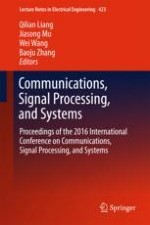2018 | OriginalPaper | Buchkapitel
Automatic Target Recognition for SAR Images Based on Fuzzy Logic Systems
verfasst von : Xuhong Feng, Qilian Liang
Erschienen in: Communications, Signal Processing, and Systems
Verlag: Springer Singapore
Aktivieren Sie unsere intelligente Suche, um passende Fachinhalte oder Patente zu finden.
Wählen Sie Textabschnitte aus um mit Künstlicher Intelligenz passenden Patente zu finden. powered by
Markieren Sie Textabschnitte, um KI-gestützt weitere passende Inhalte zu finden. powered by
